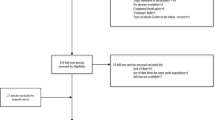Abstract
Camillo Negro (1861–1927) was a leading Italian neurologist and neuropathologist between the nineteenth and twentieth centuries. He is best known for describing the cogwheel sign in Parkinson disease. In an article published in 1906, Camillo Negro described the “bulbo-palpebral hyperkinetic phenomenon”: in peripheral facial paralysis, if the patient is asked to look up, the eyeball deviates outwards and elevates farther on the affected side. Negro thoroughly investigated the neuroanatomic and neurophysiological basis of this phenomenon that gained a certain popularity and was reported in several articles and textbooks. This sign retains some utility in peripheral facial palsy to identify a doubtful or very slight impairment of the upper face muscles, which may otherwise go unnoticed. The interest towards the semiology of peripheral facial palsy was shared by Negro's assistant Giuseppe Roasenda (1879–1959), who in 1933 described the incomplete convergence of the eyeballs in this condition.

Similar content being viewed by others
Availability of data and material
Not applicable.
References
Schettini L (2013) Negro, Camillo. In: Dizionario Biografico degli Italiani - Volume 78. Treccani, Roma
Betini BG, Meira AT, Teive HAG (2019) Camillo Negro and his contributions to neurology. Arq Neuropsiquiatr 77:669–671
Zanchin G, Salomone G (2011) Profilo storico della Società Italiana di Neurologia. In: AA.VV., 100 anni della Società Italiana di Neurologia. Quaderni di Neurologia, vol. I. Tipografia Senese, Siena
Chiò A, Gianetto C, Dagna S (2016) Professor Camillo Negro’s Neuropathological Films. J Hist Neurosci 25:39–50
Negro C, Treves Z (1901) Physiopathologie de la contraction musculaire volontaire (maladie de Parkinson). Arch Ital Biol 26:121–123
Negro C (1906) Di un fenomeno non ancora descritto, che si verifica durante la rotazione volontaria massima verso l’alto del globo oculare nei casi di paralisi periferica del n. facciale. (Nota preventiva). Gazz Osp Clin 27:857–858
Negro C (1912) Patologia e clinica del sistema nervoso: lezioni del Prof. Camillo Negro. Lattes, Torino
Senator H (1892) Über Mitbewegungen und Ersatzbewegungen bei Gelähmten. Berliner klin. Wochenschrift. 1–2
Bordier H, Frenkel H (1899) Sur le phénomène de Ch. Bell dans la paralysie faciale périphérique et sur sa valeur prognostique. Presse médicale. I:13–16 Nervenheilkd Psychiat 9:356–358
Mendel E (1887) On the Origin of the Upper (Ocular) Division of the Facial Nerve. Tr Internat M Cong 5:311
Mingazzini G (1913) Sur quelques “petits signes” des paresies organiques. Rev neurol 20:469–473
Mingazzini M (1913) Remarque additionnelle à ma note « Sur quelques petits signes des parésies organiques » (Voir revue neurologique, no 20, 30 octobre 1913). Rev neurol 20:668
Oppenheim H (1913) Lehrbuch der Nervenkrankheiten. Karger, Basel
Chiadini M (1907) Sincinesia dei muscoli elevatori del globo oculare nei casi di paralisi periferica del nervo facciale (fenomeno del Negro). Gazz Osp 28:56
Axenfeld A (1914) Traité d'ophtalmologie. Traduction française par le Dr Menier. G. Steinheil, Paris
De Castro A (1913) Sur le signe de Negro dans la paralysie facial peripherique. Rev Neurol 1:149–151
Dejerine JJ (1913) Paralysie faciale périphérique (avec signe de Negro) radiculite lombosacrée. J Méd Chir 84:645–647
Wood CA (1913) The American Encyclopedia and Dictionary of Ophthalmology. Cleveland press, Chicago
Dejerine JJ (1914) Sémiologie des affections du système nerveux. Masson et Cie, Paris
Mattirolo G (1920) Diagnostica delle malattie nervose. Utet, Torino
DeJong RN (1950) The Neurologic Examination. Hoeber, New York
Duverger C, Barré JA (1926) Etude critique du signe de Negro. Revue d’Oto-neuro-oculistique 4:53
Silva L (1929) Do phenomeno bulbo-palpebral hypercinetico na paralysia facial peripherica. Annaes da Faculdade de Medicina da Universidade de Minas Geraes, pp 9–22
Negro C (1927) Richiami sul fenomeno di Bell, ed osservazioni sul fenomeno bulbo-palpebral ipercinetico, nelle paralisi unilaterali del muscolo frontale). Giornale della R. Accademia Di Medicina di Torino. XC:245
Roasenda G (1933) Sulla convergenza dei bulbi oculari insufficiente nella paralisi periferica del nervo facciale Il Policlinico. Anno XL 3:104
Möbius PJ (1886) Ueber Insufficienz der Convergenz bei Morbus Basedowii. Cbl
Acknowledgements
We deeply grateful to Stefania Carta, Claudia Gianeto, and Anna Sperone (on behalf of the Museo Nazionale del Cinema, Torino) for allowing us permission to show the video provided as supplementary material. We thank Roberto Ginesci, Biblioteca dell'Accademia di Medicina di Torino, for his help in retrieving pertinent literature, and Andrea Orioli for graphic support. We are also grateful to Paolo Benna, Neuroscience Department, Università di Torino, Turin, Italy, and Carmelo Roberto Labate, UOC di Neurologia, Ospedale Agnelli, Pinerolo, Italy, on behalf of the Italian Study Group on the History of Neurology of the Italian Neurological Society (Società Italiana di Neurologia, SIN), for their contribution to the final validation of the present manuscript and recommendations.
Funding
This study was not funded.
Author information
Authors and Affiliations
Consortia
Contributions
Francesco Brigo conceived and wrote the article; the other authors and contributors revised it critically for important intellectual content.
Corresponding author
Ethics declarations
Informed consent
Not required.
Conflict of interest
The authors declare that they have no conflict of interest.
Ethics approval
Not required.
Additional information
Publisher's note
Springer Nature remains neutral with regard to jurisdictional claims in published maps and institutional affiliations.
Supplementary information
Below is the link to the electronic supplementary material.
Supplementary file1 A short film showing a male patient with a left-sided peripheral facial palsy. The film belongs to the neuropathological movie shot by Camillo Negro between 1906 and 1908 with the help of his assistant Giuseppe Roasenda and the cinematographer Roberto Omegna [4]. At the beginning, the patient forcedly closes his eye showing the Bell's phenomenon and then repeatedly (6 times) looks up, showing the “bulbo-palpebral hyperkinetic phenomenon”. © Collezioni Museo Nazionale del Cinema di Torino, Turin. Reproduced with permission of Collezioni Museo Nazionale del Cinema di Torino. Permission to reuse must be obtained from the rightsholder. (MP4 81742 KB)
Rights and permissions
About this article
Cite this article
Brigo, F., Lorusso, L. & the Study Group on the History of Neurology of the Italian Neurological Society. Camillo Negro (1861–1927) and the “bulbo-palpebral hyperkinetic phenomenon” in peripheral facial palsy. Neurol Sci 43, 2149–2152 (2022). https://doi.org/10.1007/s10072-021-05436-3
Received:
Accepted:
Published:
Issue Date:
DOI: https://doi.org/10.1007/s10072-021-05436-3




